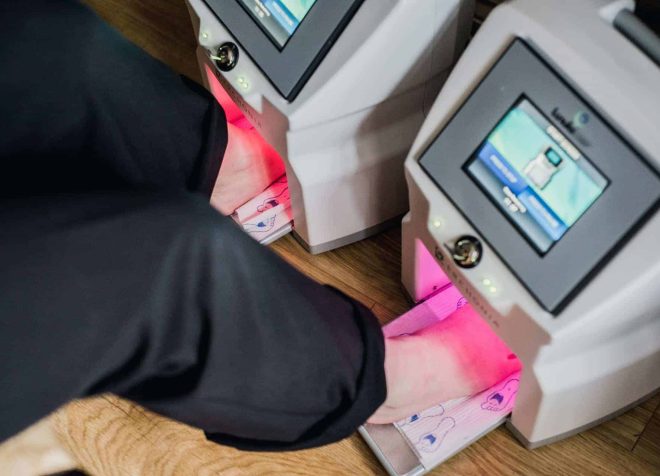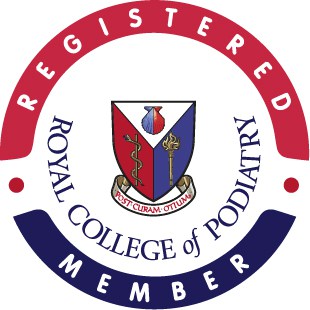Lunula Laser Treatment
Recover Your Beautiful, Healthy Toenails
If your toenails have lost their natural healthy appearance and look yellowish discoloured or are disfigured, they may be infected with fungus — a condition clinically known as onychomycosis.
It affects both toenails and fingernails, although toenails are much more likely to get infected than fingernails because fungus thrives in a warm, dark, moist environment, which is found in shoes.

Onychomycosis is the most common cause of disease in toenails and occurs in 10% of the population.
A fungal toenail infection presents itself in a number of ways:
- First, it can give your toenails an unhealthy, yellowish-brown appearance.
- White spots may appear on your toenails.
- It can turn your toenails brittle, so they break easily and have jagged edges.
- It can also make your toenails thicker and hard to trim.
- It can darken your toenails due to dirt and debris from the infection accumulated under the nail.
- It can alter the natural shape of the nails.
- It can cause a foul odour.
There are several types of fungi that cause nail fungus. The most common type is called dermatophyte. Others include yeast and moulds.
Since fungi live in the environment, anyone can get a fungal nail infection. However, some people may be more prone than others because of their age — it’s more common in older adults that are over 60 — or they suffer from:
- Frequent nail injuries caused by trauma
- Diabetes
- A weakened immune system
- Poor blood circulation
- Psoriasis
- Athlete’s foot
Nail fungus is an exceptionally infectious condition and can spread to all toes very quickly. You can also pass it on to other members of your family if they come in direct contact with the infected nails. Therefore, if your toenails start showing any of the symptoms mentioned above, it is highly advised that you seek professional help to treat them immediately. Once the infection is in the nail, it can cause the surrounding skin to become infected, which can lead to the deterioration of tissue and, as a result, bacterial infection, which can turn quite serious.
Besides, fungal nail infections can have significant repercussions on your quality of life. They can cause embarrassment and have a debilitating effect on your self-image.
Although nail fungus is unsightly to look at, it’s not usually a painful condition. However, if the toenail thickens a lot or becomes misshapen, it may cause discomfort when wearing shoes and walking. In more severe cases of infection, the toenail may loosen from the nail bed and fall off altogether.
Furthermore, nail fungus can spread to the surrounding skin, leading to developing Athlete’s Foot, a fungal skin condition that can be itchy and even cause the sensation of stinging or burning.
At Walk This Way Podiatry, we use Lunula Laser treatment to eradicate fungal nail infections.
What is Lunula Laser treatment?
Lunula is a non-thermal laser, which attacks specific cells within a fungus to kill it off. It uses a self-operated, non-contact device to deliver the treatment safely and effectively, with no adverse effects or the need to take time off post-treatment.
What makes Lunula Laser different to other laser treatments?
Lunula is a cold laser, meaning it doesn’t give out heat, which makes it painless.
The laser has been developed using the principles of photochemistry, a process that uses the cells in your body to produce different types of chemicals, which attack and break through the spores of the fungus.
Living cells require chemical energy to perform some of their vital functions and ultimately, survive. This is why the body stores molecules like carbohydrates, such as glycogen and fats, to have a well-stock supply of chemical energy. When the cell requires energy, this energy is converted from storage molecules into Adenosine Triphosphate (ATP). ATP then serves as a shuttle, delivering energy to places within the cell where energy-consuming activities are taking place.
Adenosine Triphosphate is generated by working organelles called Mitochondria, often referred to as ‘the cell’s powerhouse.’ The function of Mitochondria is to keep the cell full of energy, and they do this through the biochemical process of ‘cellular respiration.’ Using oxygen available within the cell, Mitochondria convert the chemical energy from food into a form of energy that can be used by the cell to fuel its processes and survive.
Mitochondria produce about 90% of the energy that cells need to function. Without Mitochondria, energy cannot be converted to power the cells, leading to worn-down, malfuctioning cells.
Lunula Laser, therefore, has been designed to target the Mitochondria in the fungal cell, eliminating its capacity to release and convert the energy the cell needs to survive. The laser light passes through the infected nail without causing damage to it or the surrounding skin, attacking the fungus that lives in and under the toenail.
How does Lunula Laser work?
Lunula Laser uses two different wavelengths of light — 405nm (violet) and 635nm (red) — to attack the Mitochondria and kill the fungal cell, effectively treating Onychomycosis.
When activated, the Lunula Laser device causes the two light beams to rotate. The violet beam is antimicrobial, and its function is to target the Mitochondria to trigger a reaction called oxidative stress. When in contact with the infected toenail, it activates a photochemical response producing Reactive Oxygen Species chemicals (specifically Hydrogen Peroxide), which causes damage to the Mitochondrial and fungal cell membrane. These chemicals are then converted to Hydrogen Peroxide, a natural antiseptic, which kills off the fungus that lives in and under the nail, causing irreversible cell damage. The red beam then works in conjunction with the violet beam by activating another photochemical reaction, which dilates localised blood vessels. This brings your blood supply down to the area, triggering your body’s natural immune response to release white blood cells to help fight the infection. Your body will now start to regenerate new tissue, promoting the toenail’s growth. It is the combination of these two lights which eradicates the nail fungal infection.What’s involved during Lunula Laser treatment?
Lunula Laser involves a straightforward process to deliver a non-contact, safe and effective treatment for fungal nail infection.
During the treatment, you’ll be asked to insert your infected foot inside a self-operated device, which is then activated and runs for a period of 12 minutes. Lunula’s unique feature is that the device delivers the light as a line-generated beam, which maximises the amount of area on the nail that can receive the treatment. The fungal virus may not only affect one or multiple toes but also be found deep within a dystrophic nail or along the nail bed and root. The line-generated beam reaches the fungal pathogen regardless of where it resides.How many Lunula Laser treatments are you likely to need?
The amount of treatments needed will vary depending on the severity of the fungal nail infection.
Moderate infections usually require four 12-minute-session treatments. However, for more severe infections, a course of 6-8 treatments may be necessary. Our Podiatrist will discuss this in detail with you during your initial assessment.
Is Lunula laser safe?
Lunula laser therapy is generally considered safe. The laser emits a low-level light that penetrates the nail and kills the fungus without damaging surrounding tissue. The procedure is non-invasive and typically painless, with minimal risk of side effects.
However, as with any medical procedure, there are potential risks and complications associated with Lunula laser therapy. Some patients may experience some side effects such as temporary discoloration of the nail or mild discomfort during the procedure.Does Lunula laser work for toenail fungus?
Lunula Laser treatment not only eradicates fungal nail infections, but also has proven to deliver many additional benefits, such as:
- It improves blood circulation in the feet which increases the rate of new nail growth.
- It boosts oxygen delivery for the renewal of cells.
It reinforces the immune system. - It promotes healthy nail growth from the first treatment, which reduces the risk of re-infection or relapse.
- It is extremely safe since there is no toxic plume as with other laser devices, offering a more natural approach with long-lasting results.
- No recovery time is required.
- It is 100% safe. It poses none of the risks and harmful side effects of oral anti-fungal medications.
- Unlike ‘hot’ laser, it is entirely painless.
- Clinical trial results demonstrate that 89% of patients respond to Lunula laser with 6.1mm of clear, healthy nail growth after six months.
- It is FDA Approved, CE Marked.
- The Lunula Laser is the 1st, and only non-thermal FDA Market Cleared laser device for the temporary increase of clear nails for patients with Onychomycosis.
What happens during the treatment?
When you book an appointment for fungal nail infection, you’ll receive a full initial assessment to first determine if you are suitable to receive the laser treatment and then establish the severity of your infection and the number of sessions needed.
During the assessment, one of our experienced Podiatrists will examine your feet and ask you a series of questions to identify the cause of the fungal infection and assess the damage caused to the nails by the fungus, trauma or footwear.
We’ll also discuss with you your general health and methods to prevent a cross infection or reinfection.
Once this has been established, we will proceed to prepare your toenails for the laser treatment by giving them a thorough clean to remove any debris from the surface of the nail.
We will then take a few photographs of your feet to monitor progress during the treatment.
As Lunula Laser is a self-operated device, once activated it’ll commence the treatment. You simply have to relax and leave the laser light working for 12 minutes.
How effective is Lunula Laser treatment?
Lunula laser treatment has revolutionised how fungal nail infections are treated. It is currently one of the safest, most effective fungal nail treatments that there are on the market. It is used extensively worldwide and results in much higher success rates than other traditional treatments, including oral medications, which can also be harmful, and topical treatments such as ointments, sprays, and lacquers.
What’s Lunula Laser success rate?
Clinical trial results demonstrate that 89% of patients respond to Lunula laser with 6.1mm of clear, healthy nail growth after six months. These are outstanding results for a condition that until now had proven to be extremely stubborn to eradicate.







